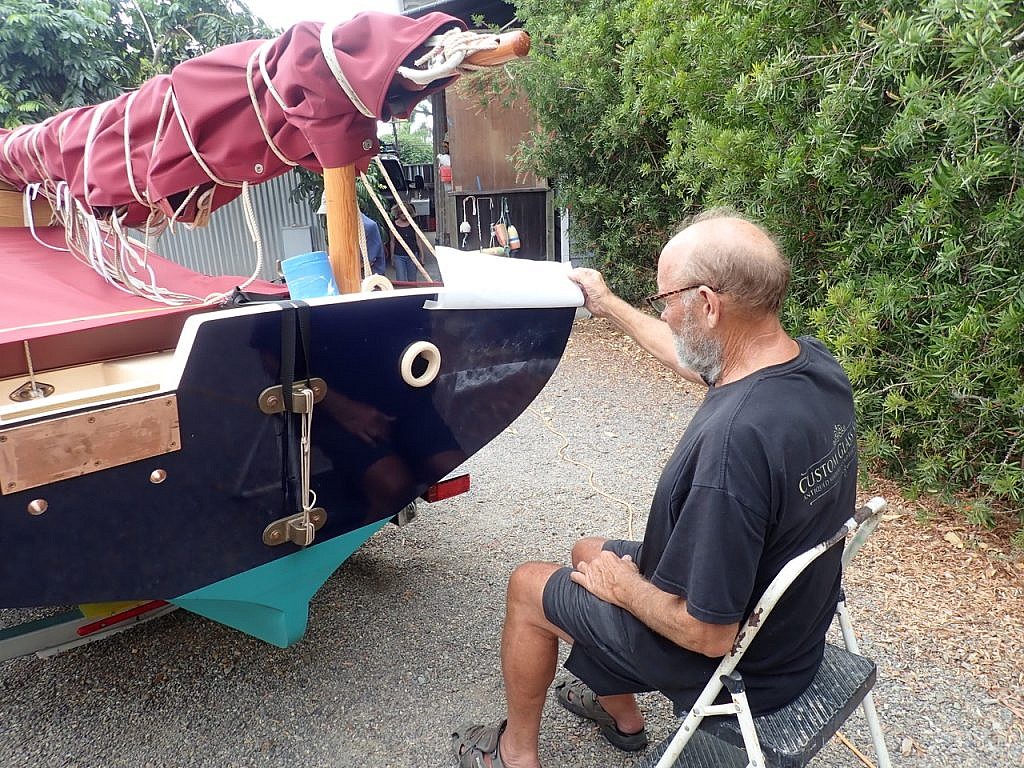
by Scott Sadil
Let’s face it: A big reason some of us are enamored of wooden boats is that they’re built by hand, carrying us back to a time when a world we either experienced or imagined was enriched by craftsmanship we rarely encounter, face to face, in the modern digital age.
Practically every aspect of my new boat, Tamalita, is a result of work done by either my hands or the hands of somebody else I’ve met, talking over specific needs or problems and elements of design, then stepping back as a skilled artisan practices his or her, often Old World, craft.
I love this stuff. Some of it the weekend or hobby builder/sailor fumbles with and, in time, finally masters. Ropework, leather work, maybe even some minor metal jobs that offer the opportunity to shape a few pieces of copper or silicon bronze laid atop a genuine, if undersized, anvil.

I even managed to install a genuine solar-powered electrical system in Tamalita, which made for the usual DIY satisfactions, while at the same time pushing me towards exactly the kind of mysterious abstractions that fishing and boating generally allow me to avoid.
There’s enough already in the algorithmic world around me that I simply don’t care to unravel or understand.
Show me a shop dedicated to the ancient craft of sailmaking, however, or, say, casting cleats or fairleads or rudder hardware from molten bronze poured into sand forms left hollow by intricate carved wooden patterns, and I want to watch and learn, or at least ask questions about, every step of the way. The methods are concrete, comprehensible, the final product infused with both the process by which it was made and the function it will ultimately serve.
And it’s impossible to ignore the imprint of real live human beings who manipulated the medium start to finish.

Yet anyone who tries to find and employ a tradesperson of any kind today, whether it be a gunsmith, a cobbler, or a cane rod builder, knows it’s difficult, at best, to get on the schedule. The day before I hooked Tamalita’s trailer to my 20-year-old truck, ready to head for the Mexican border, my canvas guy and his lone assistant finally came by and delivered their wares: sail cover, boom tent, cockpit tonneau, and bug net for the companionway.
I confess I was a wee bit uptight. My sweetheart and I were scheduled to leave at dawn; what if something didn’t quite fit? I could see myself stopping every half hour, pulling to the side of the interstate to adjust straps or tie down flapping corners. A thousand-mile shakedown drive?
Yikes.
But JD is good. This is the third boat of mine he’s worked on. Every cover, every job, is different; he has to design, engineer, improvise, invent—while at the same time understanding what his materials can and cannot do. Then he has to build the damn things—cutting, assembling, stitching—making certain, of course, they look good, fit well, and are capable of handling the stresses of a trailer going 70 miles an hour, day after day, with straps chafing, the sun beating down, the fabric stretching and shrinking, and dirt and grime collecting, degrading, threatening to turn his work into rags.

In Encinitas, an hour north of the international border, I back Tamalita into a tight parking spot alongside Minnie, Rod Treece’s Catalina 22. Rod’s a sign painter; Tamalita, though officially christened, still lacks her scripted name.
If you’ve never watched a sign painter work, you don’t know what you’re missing.
Gray’s Angling Editor, Scott Sadil, believes hands were made for something more than tapping a keyboard and swiping a screen.
